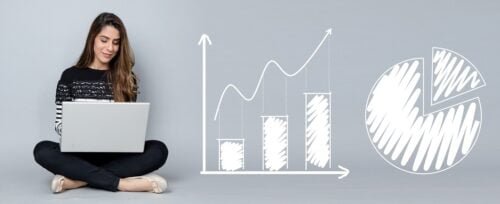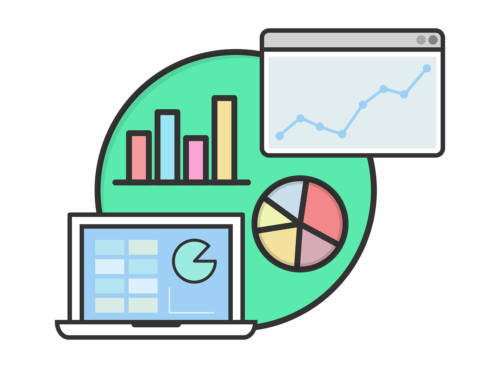In the realm of business analytics, accurate forecasting plays a pivotal role in informed decision-making and strategic planning. A thorough understanding of quantitative methods is crucial for organizations seeking to predict future trends, optimize operations, and ultimately remain competitive in a fast-paced market. This article will shed light on the fundamentals of forecasting quantitative methods, exploring various techniques and tools that enable professionals to analyze historical data, identify patterns, and anticipate future outcomes with confidence.
Definition of Forecasting
Understanding the concept
Forecasting is the process of predicting future events or outcomes based on historical data and statistical models. It is an essential tool for businesses and organizations to make informed decisions and plan for the future. By using various quantitative methods, forecasters can estimate future trends, patterns, and probabilities, enabling better resource allocation, inventory management, production planning, and financial planning.
Importance of forecasting
Accurate and reliable forecasts are crucial for various reasons. They help organizations to anticipate demand for their products or services, enabling them to optimize production and inventory levels. Forecasting also assists in financial planning and budgeting, allowing organizations to allocate resources efficiently and identify potential risks or opportunities. Additionally, forecasting is used in economics to track economic indicators and predict future economic conditions, aiding governments in making informed decisions and formulating policies.
Types of forecasting
Forecasting can be broadly categorized into two types: qualitative and quantitative methods. Qualitative forecasting relies on expert opinions, surveys, interviews, and market research to predict future outcomes. This approach is useful when historical data is limited or when the factors influencing future events are non-quantifiable, such as changes in consumer preferences or technological advancements. On the other hand, quantitative forecasting uses historical data and mathematical models to make predictions. This method is appropriate when historical patterns and trends can be identified and quantified to project future events accurately.

Time Series Analysis
Overview of time series analysis
Time series analysis is a quantitative method used to analyze data that is collected sequentially over time. It involves identifying patterns, trends, and seasonality in the data to make predictions about future values. Time series analysis considers both the level (average value) and the changes (trends and variations) in the data, helping forecasters understand the underlying dynamics and factors influencing the series.
Components of time series
Time series data can be decomposed into various components to better understand its behavior. The four main components are:
- Trend: The long-term movement or direction of the data, typically represented by a straight line or a curve.
- Seasonality: Regular patterns or fluctuations that occur within a specific time frame, such as daily, weekly, or yearly cycles.
- Cyclical variations: Non-regular fluctuations that occur over a period longer than a year, often influenced by economic or business cycles.
- Random or residual variations: Unpredictable fluctuations that cannot be explained by trends, seasonality, or cyclical patterns.
By identifying and modeling these components, forecasters can develop more accurate predictions and gain insights into the underlying factors affecting the time series data.
Methods for analyzing time series data
There are several methods available for analyzing time series data, including:
- Moving Averages: A method that calculates the average of a fixed number of preceding observations to identify trends and smooth out random fluctuations.
- Exponential Smoothing: A technique that assigns exponentially decreasing weights to past observations, giving more relevance to recent data.
- Regression Analysis: A statistical method that identifies relationships between a dependent variable and one or more independent variables to predict future values.
- ARIMA Models: Autoregressive Integrated Moving Average (ARIMA) models combine autoregressive, differencing, and moving average components to forecast future values.
- Neural Networks: Artificial neural networks use interconnected nodes or “neurons” to learn patterns and make predictions based on historical data.
- Simulation Methods: Monte Carlo simulation generates numerous random samples to estimate the probability distribution of future events and outcomes.
By utilizing these methods in time series analysis, forecasters can obtain valuable insights into past patterns and trends and use them to make accurate predictions about future events and outcomes.

Moving Averages
Definition and calculation of moving averages
Moving averages are a commonly used technique in time series analysis for smoothing data and identifying trends. A moving average is calculated by taking the average of a fixed number of preceding observations within a specified time period. The moving average smooths out random fluctuations and provides a clearer picture of the underlying trend in the data.
To calculate a moving average, the following steps are taken:
- Determine the desired time period for the moving average (e.g., 7 days, 12 months).
- Select the data points for the specified time period.
- Sum the selected data points.
- Divide the sum by the number of data points.
By repeating this process for each subsequent time period, a series of moving averages can be generated, revealing the overall trend in the data.
Advantages and limitations
Moving averages offer several advantages in time series analysis. They help eliminate short-term fluctuations and noise in the data, making it easier to identify long-term trends and patterns. Moving averages are also simple to compute and understand, requiring minimal mathematical knowledge.
However, moving averages have certain limitations. They tend to lag behind sudden changes or shifts in the data, as the averaging process smoothes out extreme values. Moving averages also assume that the underlying trend remains constant over time, which may not always be the case in real-world scenarios.
Application in forecasting
Moving averages are widely employed in forecasting to estimate future values based on historical data. By using different time periods and combinations of moving averages, forecasters can adapt the technique to suit specific data patterns and capture the desired level of trend smoothing. Moving averages are particularly useful when dealing with fluctuating or seasonal data, as they help discern underlying trends and remove noise. They provide a simple yet effective tool for forecasting in various industries, such as finance, supply chain management, and market research.

